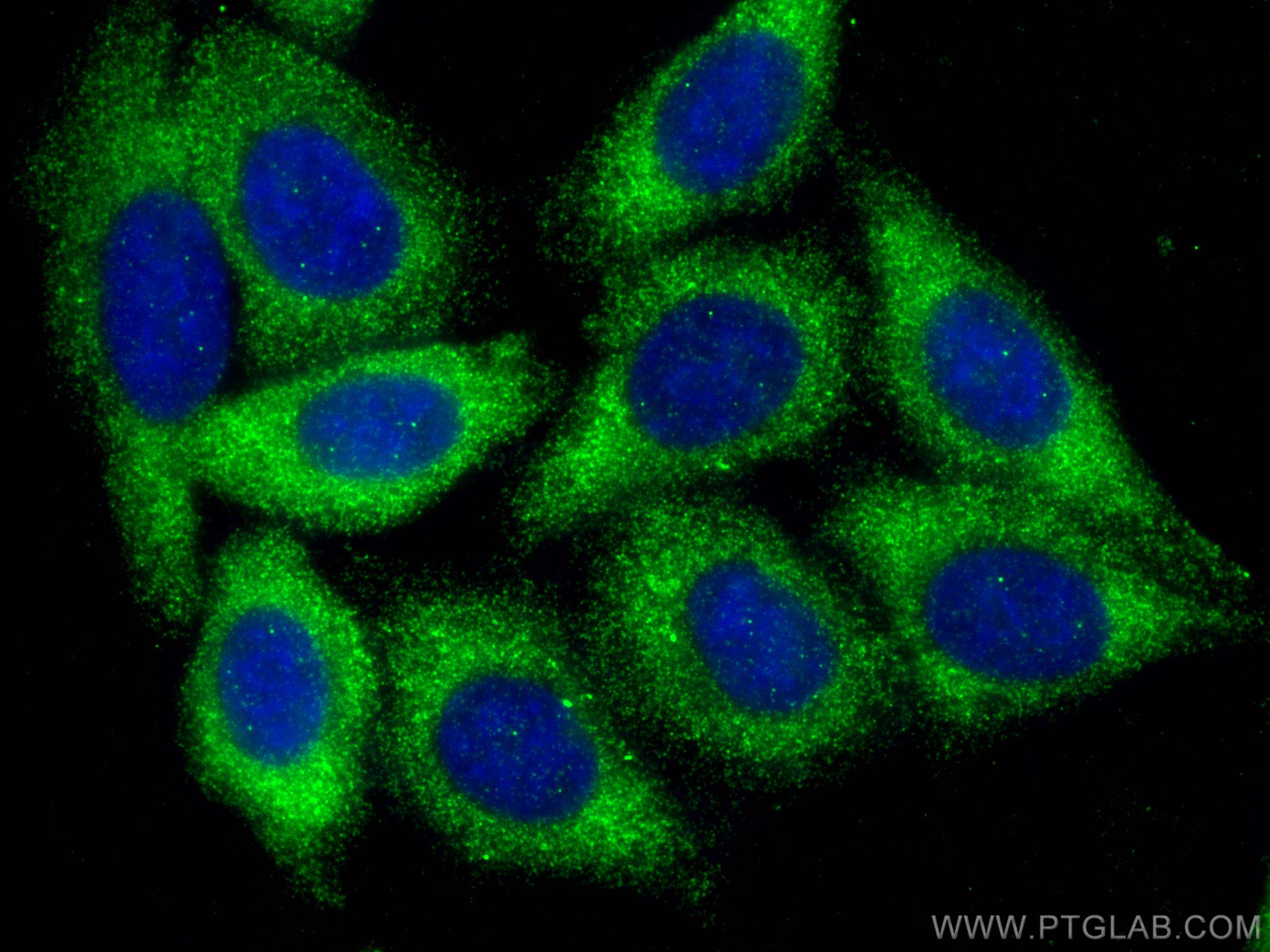Validation Data Gallery
Tested Applications
| Positive WB detected in | HepG2 cells, mouse liver tissue |
| Positive IHC detected in | human ovary cancer tissue Note: suggested antigen retrieval with TE buffer pH 9.0; (*) Alternatively, antigen retrieval may be performed with citrate buffer pH 6.0 |
| Positive IF/ICC detected in | HepG2 cells |
Recommended dilution
| Application | Dilution |
|---|---|
| Western Blot (WB) | WB : 1:1000-1:4000 |
| Immunohistochemistry (IHC) | IHC : 1:250-1:1000 |
| Immunofluorescence (IF)/ICC | IF/ICC : 1:50-1:500 |
| It is recommended that this reagent should be titrated in each testing system to obtain optimal results. | |
| Sample-dependent, Check data in validation data gallery. | |
Published Applications
| WB | See 1 publications below |
Product Information
16600-1-AP targets SPTLC3 in WB, IHC, IF/ICC, ELISA applications and shows reactivity with human, mouse samples.
| Tested Reactivity | human, mouse |
| Cited Reactivity | human |
| Host / Isotype | Rabbit / IgG |
| Class | Polyclonal |
| Type | Antibody |
| Immunogen | SPTLC3 fusion protein Ag9760 相同性解析による交差性が予測される生物種 |
| Full Name | serine palmitoyltransferase, long chain base subunit 3 |
| Calculated molecular weight | 175 aa, 20 kDa |
| Observed molecular weight | 62 kDa |
| GenBank accession number | BC020656 |
| Gene Symbol | SPTLC3 |
| Gene ID (NCBI) | 55304 |
| RRID | AB_3085500 |
| Conjugate | Unconjugated |
| Form | Liquid |
| Purification Method | Antigen affinity purification |
| UNIPROT ID | Q9NUV7 |
| Storage Buffer | PBS with 0.02% sodium azide and 50% glycerol , pH 7.3 |
| Storage Conditions | Store at -20°C. Stable for one year after shipment. Aliquoting is unnecessary for -20oC storage. |
Background Information
Serine-palmitoyltransferase (SPT) is a pyridoxal 5‐phosphate (PLP)-dependent α‐oxoaminotransferase that consists of three core subunits-SPTLC1, SPTLC2, and SPTLC3-that share a mutual homology. The amino acid sequences between SPTLC1 and SPTLC2 (or SPTLC3) show a mutual similarity of about 20%, whereas the sequences for SPTLC2 and SPTLC3 show a significantly higher identity of 68% (with 84% similarity) on the amino acid level. SPTLC3 is not or only little expressed in tissues that are functionally connected to erythropoiesis or immune response like peripheral blood cells, bone marrow, and spleen. Instead, the lack of SPTLC3 expression seems to be compensated by increased expression of SPTLC2 in these tissues. (PMID: 17331073, PMID: 17023427)
Protocols
| Product Specific Protocols | |
|---|---|
| WB protocol for SPTLC3 antibody 16600-1-AP | Download protocol |
| IHC protocol for SPTLC3 antibody 16600-1-AP | Download protocol |
| IF protocol for SPTLC3 antibody 16600-1-AP | Download protocol |
| Standard Protocols | |
|---|---|
| Click here to view our Standard Protocols |
Publications
| Species | Application | Title |
|---|---|---|
Am J Cancer Res TRIM8 inhibits breast cancer proliferation by regulating estrogen signaling. |


